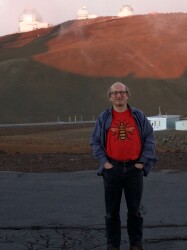BibTex format
@article{Ma:2019:1538-4365/ab4194,
author = {Ma, J and Cooray, A and Nayyeri, H and Brown, A and Ghotbi, N and Ivison, R and Oteo, I and Duivenvoorden, S and Greenslade, J and Clements, D and Wardlow, J and Battisti, A and da, Cunha E and Ashby, MLN and Perez-Fournon, I and Riechers, D and Oliver, S and Eales, S and Negrello, M and Dye, S and Dunne, L and Omont, A and Scott, D and Cox, P and Serjeant, S and Maddox, S and Valiante, E},
doi = {1538-4365/ab4194},
journal = {Astrophysical Journal Supplement Series},
pages = {1--19},
title = {Spitzer catalog of herschel-selected ultrared dusty star-forming galaxies},
url = {http://dx.doi.org/10.3847/1538-4365/ab4194},
volume = {244},
year = {2019}
}

